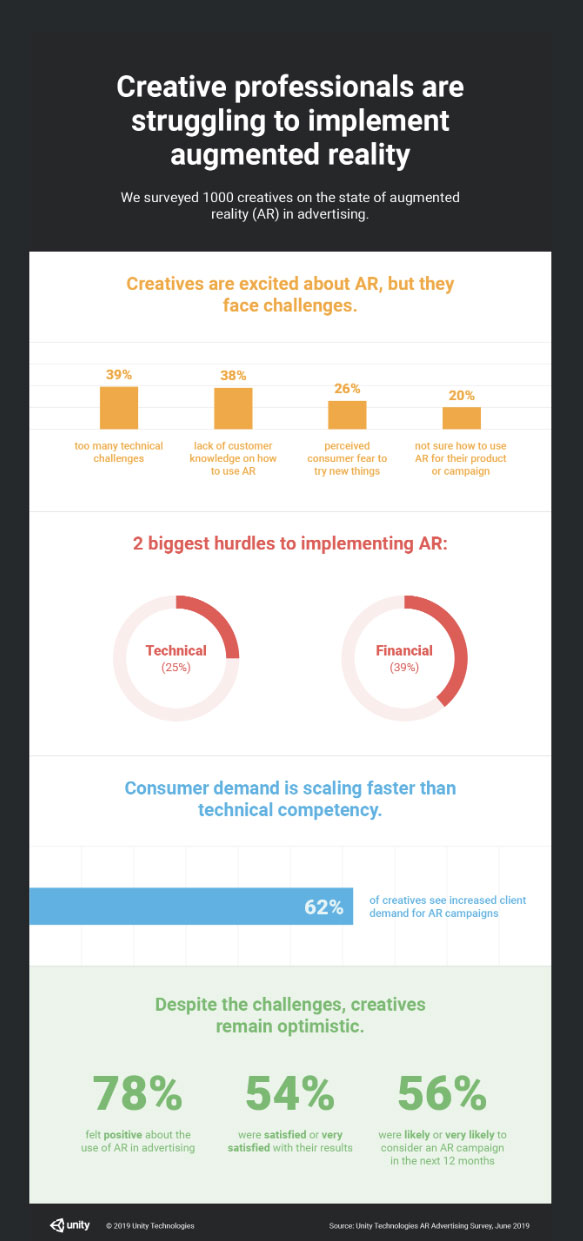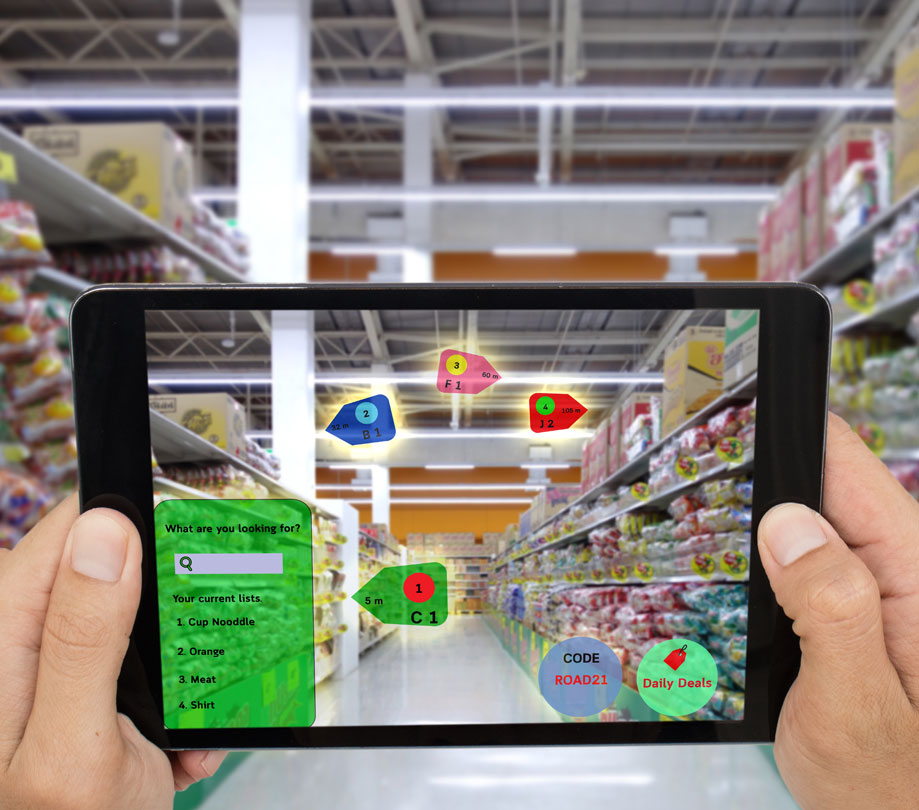Why AR advertising is hard
Friday, June 21, 2019

|
Richard Harris |
Unity Technologies latest survey reveals that 63 percent of creatives have trouble using Augmented Reality (AR) in Advertising.
To mark the second day of Cannes Lions Advertising Festival of Creativity 2019, Unity Technologies, the company powering more than 60% of all AR and VR content and serving more than 11B ads each month, has revealed the results of an independent research project on the state of the Augmented Reality (AR) advertising and marketing market in 2019. Unity surveyed approximately 1000 participants within the advertising and marketing sectors across the US and UK to gauge a better understanding of their comfort level, technical competency, enthusiasm for, and experiences with AR in advertising and marketing.
The survey revealed that technical hurdles are the number one thing hindering the creation of successful AR campaigns. Moreover, results suggested that creatives who have worked with an AR campaign cite technical challenges (24.6%) and cost (39.1%) as the two biggest issues in considering the campaigns successful.
“Augmented reality is becoming ubiquitous and creative marketers and advertisers are already establishing the use cases that have made the rest of the industry pay attention,” said Julie Shumaker, Vice President of Advertiser Solutions, Unity Technologies. “This survey reveals one very important thing: there is a disconnect between the growing demand for AR solutions and the pace at which advertisers, marketers, and creatives are becoming comfortable with the technology. We need to improve AR familiarity among creatives -- both in terms of technical competency and highlighting the cost-effective solutions that are available today.”
The survey unveiled that despite perceived technical shortcomings of AR and associated high costs of the technology, the demand for AR activations and experiences continues to rise.
AR Advertising study key findings in the survey reveal that:
- Technology hinders adoption: Not only do those who have engaged in AR campaigns suffer from a technical disparity, but those who haven’t engaged in AR activities yet cite a lack of technical knowledge (24.1%) and concerns about the potential cost (31%) as reasons for their hesitation.
- Demand continues to grow: 80% of creatives believe that AR for advertising and marketing is an integral part of their work. The results show that the majority of creatives “strive to use it” as part of their upcoming projects. Additionally, over half of all respondents acknowledged an increased client demand for incorporating AR in marketing and advertising campaigns.
- People are ready to adopt: Despite the perceived technical challenges, the vast majority of respondents (78.4%) to the survey felt positive about AR’s use in advertising, and more than half (61.8%) of creatives are seeing an increased client demand for AR campaigns. Similarly, more than half of all creatives surveyed (55.8%) said they were likely or very likely to consider an AR campaign in the next 12 months, and more than half (54.1%) who have already deployed an AR campaign were satisfied with user engagement.

Unity wants to help close the gap
As a way to help close this gap, Unity’s real-time 3D creation technology and workflows arms creators with the tools and resources to build and deploy AR experiences that have the most impact without the technical barriers. Announced earlier this year, AR Foundation is a purpose-built development framework that enables developers to build AR apps and deploy across both iOS and Android. Using Unity as a Library, announced just yesterday, allows brands developing native Android, iOS, or Windows apps to add AR functionality from Unity into their existing mobile apps, without rebuilding their apps from scratch.
To help seamlessly integrate AR into any advertising campaign without friction, Unity today announces Responsive AR Ads, the first truly user-first approach to implementing AR in advertising: “AR is arguably the most powerful storytelling medium ever. Yet, the technological barriers, the lack of control, and fear of the unknown are hindering its usage,” said Tony Parisi, Head of AR/VR Ad Innovation, Unity Technologies. “Responsive AR Ads are a friendlier, less intimidating approach to implementing AR into campaigns that are tailored to increase opt-in rates for advertisers while improving user comfort by putting control in their hands.”
Each Responsive AR Ad begins as a 3D-rendered interactive ad unit that, after a brief period of familiarization, provides users with the opportunity to enhance their ad experience with the introduction of AR components. In providing rich interactive 3D experiences, Responsive AR Ads help to address concerns for users who don’t opt-in to the AR component. Rather than relying on a “fallback” experience, Responsive AR Ads continually provide users with interactive 3D features until the end of the engagement.

Become a subscriber of App Developer Magazine for just $5.99 a month and take advantage of all these perks.
MEMBERS GET ACCESS TO
- - Exclusive content from leaders in the industry
- - Q&A articles from industry leaders
- - Tips and tricks from the most successful developers weekly
- - Monthly issues, including all 90+ back-issues since 2012
- - Event discounts and early-bird signups
- - Gain insight from top achievers in the app store
- - Learn what tools to use, what SDK's to use, and more
Subscribe here











